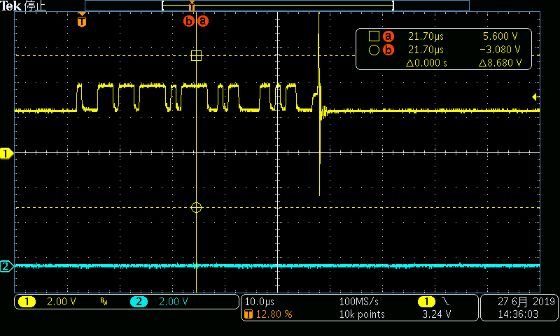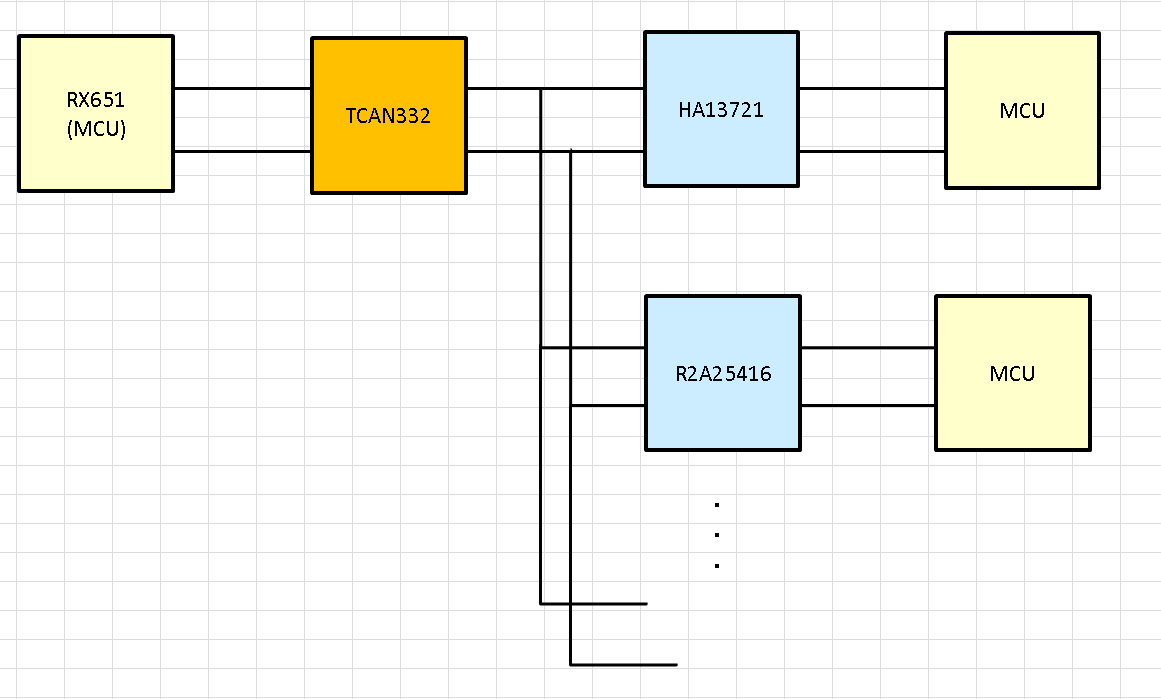Hi,team.
I'm evaluatingTCAN332DCN in a mixed 3.3V and 5V CAN system .
I use 5V CAN IC that HA13721 or R2A25416 etc.
I use single termination.
Probing CANH with an oscilloscope , CANH has large linging at end.
I assumed that I could 3.3V CAN can mix in 5V CAN system , but dose it have any restrictions?
For example node amount,bus length...
I post measured waveform and block diagram.
-
Ask a related question
What is a related question?A related question is a question created from another question. When the related question is created, it will be automatically linked to the original question.



